DNA Extraction: Chelex¶
Contributed by Paul Barber
DNA Extraction via Chelex
Chelex is notorious for being as fickle as it is cheap and easy. Here are some tips for good amplifications: 1. Sometimes sampleswork best if used immediately, sometimes it is better to wait overnight before using them. Experiment and find what works for your species. Results can vary by taxa. 2. When doing initial PCRs, do a serial dilution of template.The amount of a Chelex DNA extraction used in a PCR can be as high as half of the volume of the PCR or as low as 1 microliter of a 1:10,000 dilution. I find that 1 microliter of a 1:1 is good for most applications. 3. If you don’t get amplifications from your PCR the first time with a Chelex extract, repeat the vortex, spin, incubate, vortex, spin, sit overnight procedure described above. Often this will make a negative PCR work.
Method¶
- With Bleach, sterilize a dry reagent spatula, and a small magnetic stir-bar.
- Prepare a 5-10% by weight slurry of Chelex100 Resin (Biorad part 143- 3832,100-200 mesh Chelex, sodium form) and UV sterilized HPLC water. The most effective way to do this is to take a 50 ml sterile falcon tube, place in on a scale inside a small beaker and zero the scale. Then add 5 grams of Chelex and fill to 50ml mark with water.
Precision is not critical. Sterile technique is.
- Place sterile stirbar in tube and place on magnetic stirrer. Chelex settles quickly so if the slurry is not well mixed, your concentrations and results will be variable. Keeping the slurry well mixed, aliquot 300-500micro liters into 0.6 or 1.6ml eppendorf tubes (again, sterile) and cap immediately. If you have access to a laminar flow hood, that is a good place to do all of this. You may want to wipe down the scale and stirrer with a 10% bleach solution and/or UV sterilize prior to use.
- Turn on heating block. Set to 95°C. Fill holes with water.
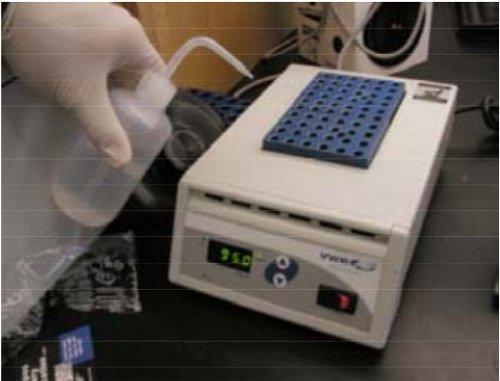
- Using sterile forceps (Flame over alcohol burner several times to sterilize), remove a small piece of tissue from your sample. This piece of tissue should be big enough to be visible, but not so big as to be easily visible. Imagine cutting a 0.2mm section of a standard staple. This is plenty big. Too much tissue may inhibit your reactions.
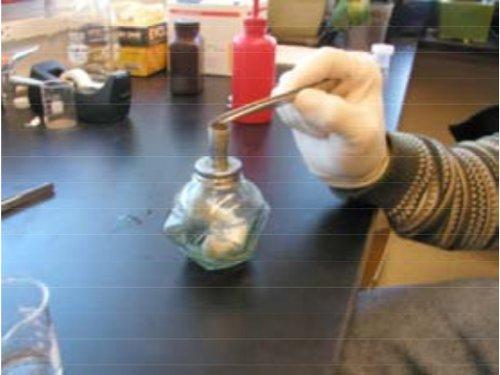
Sterilize forceps between samples.
- When finished, make a negative Chelex control by dipping your sterilized forceps into a tube of Chelex slurry.
- Vortex sample and chelex slurry for 10-15 seconds.
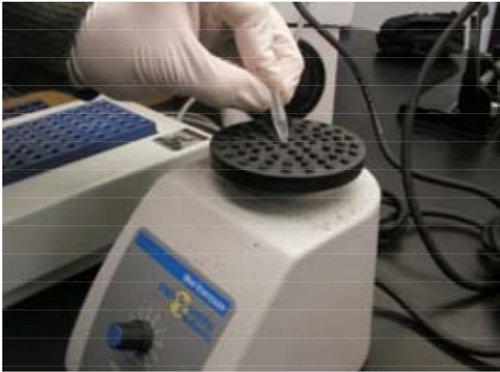
Be sure lids are snapped on tightly before begining.
- Spin samples briefly at high speed in a microcentrifuge
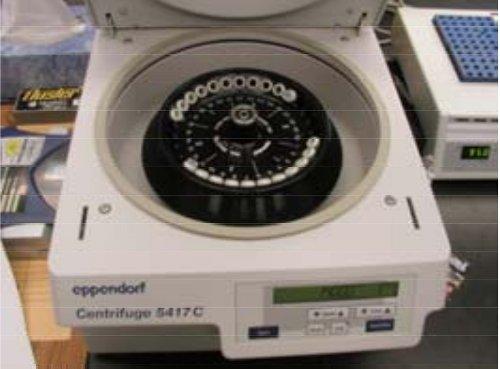
- Incubate samples for 20 minutes at 95°C
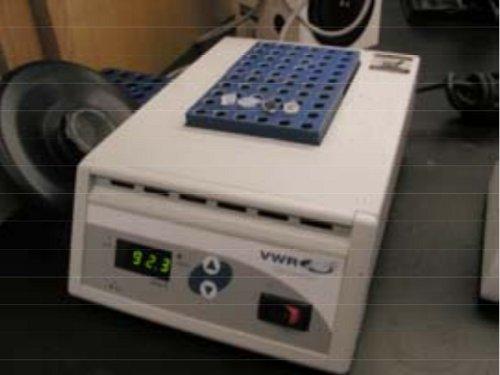
*The block temperature may drop slightly when doing this step. This drop is normal. Check tubes while incubating to ensure that lids have not popped off. *
- Vortex samples again for 10-15 seconds.
Becareful as steam may pop lid off of centrifuge tube. Hold lids down.
- Spin tubes again at high speed in microcentrifuge.
- Samples are ready to use.
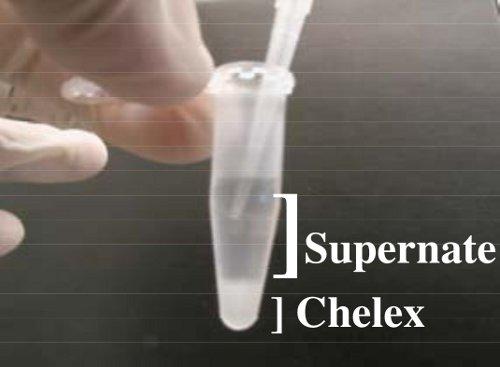
Only use supernate for PCR reactions. Chlex bead will inactivate Taq!
This method is based, with permission, on an original protocol available here.